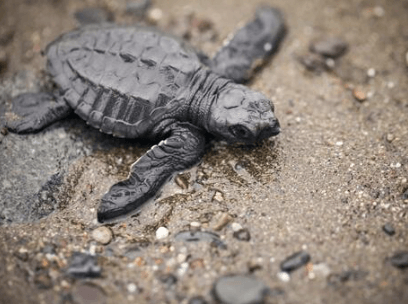Turtle That Looks Like a Leaf

The Turtle That Looks Like a Leaf, an extraordinary example of evolutionary adaptation, presents a fascinating case study in camouflage, closely mimicking the leaves within its Southeast Asian habitat. This unique trait serves not only as a defense mechanism against predators but also facilitates its foraging strategies. However, the survival of this remarkable species is increasingly jeopardized by habitat destruction and illegal trafficking. As conservationists strive to implement effective strategies, the intricate relationship between the leaf-turtle and its environment raises critical questions about the broader implications for biodiversity and ecosystem health. What measures can ensure its future?
Unique Adaptations for Survival
The Turtle That Looks Like a Leaf, scientifically known as the Attenborough’s tortoise, exhibits remarkable adaptations that enhance its survival in the wild, primarily through its incredible mimicry of foliage, which serves as both camouflage and a mechanism for evading predators.
Additionally, its diet preferences align with its habitat, allowing it to consume various plant materials while remaining inconspicuous, further optimizing its camouflage strategies against potential threats in its environment.
Read also: Anime:05gbf9ed4-Q= Dibujar
Habitat and Distribution
Found primarily in the dense, humid forests of Southeast Asia, the Attenborough’s tortoise thrives in environments characterized by rich biodiversity and ample vegetation, which provide both nourishment and essential cover for its survival.
These tropical forests, interspersed with intricate river systems, offer crucial habitats that support the tortoise’s unique lifestyle, enabling it to adapt seamlessly within its ecological niche.

Conservation Status and Efforts
Conservation efforts for Attenborough’s tortoise have ramped up in response to alarming population declines driven by habitat loss and illegal wildlife trade. This has prompted a multi-faceted approach that includes habitat restoration, legal protections, and community engagement initiatives.
Despite these efforts, significant conservation challenges persist, including insufficient funding and local awareness.
Ongoing restoration initiatives are essential to ensure the long-term survival of this unique species.
Read also: Wallpaper:9l0u_W8hpni= Friends
Conclusion
The Turtle That Looks Like a Leaf, with its intricate mimicry of foliage, stands at a precarious crossroads between survival and extinction.
As habitat destruction escalates and illegal trade continues to threaten its existence, the fate of this remarkable species hangs in the balance.
Conservation efforts must intensify, focusing on habitat restoration and community involvement, to safeguard this extraordinary creature.
Will these initiatives succeed in preserving the leaf-turtle’s future, or will it become another lost marvel of nature? The answer remains uncertain.




